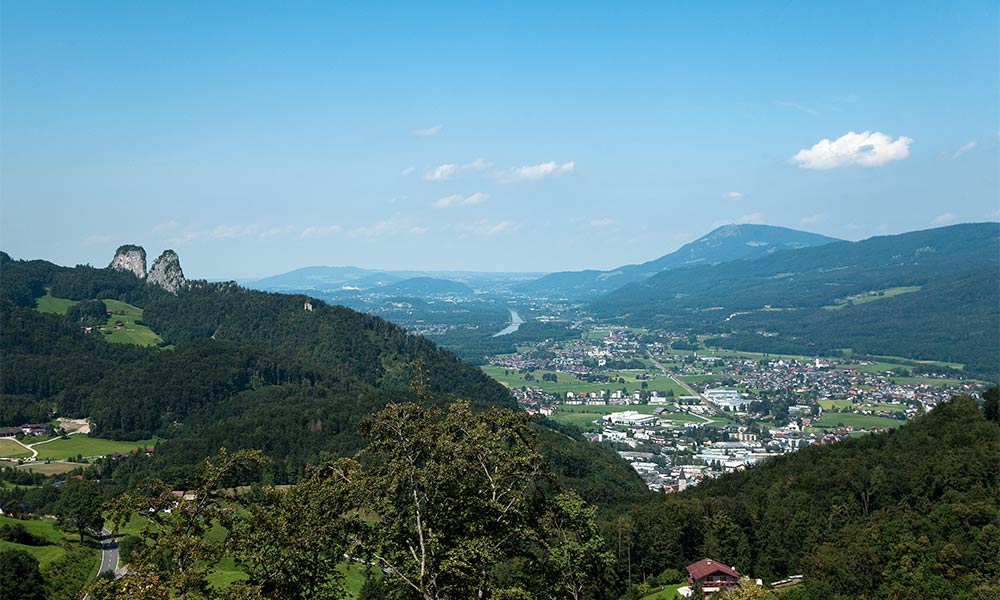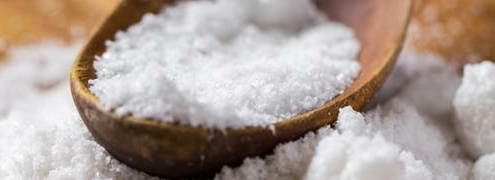-
 Liebe Wintersportfreunde, auch bei den Skikursen von Ralph Spraiter www.skischule-duerrnberg.com ist schon Hochbetrieb!...
Liebe Wintersportfreunde, auch bei den Skikursen von Ralph Spraiter www.skischule-duerrnberg.com ist schon Hochbetrieb!...
On top of the City!
Enjoy breathtaking moments on the top of Zinkenkogel! The cozy Zinkenstüberl offers culinary highlights, so you can enjoy delicious food combined with a stunning view over the rooftops of Hallein and Salzburg. This is exactly what you are looking for after a strenuous hike. Of course, you can also use our double chairlift to reach the top of Zinkenkogel to experience a hint of relaxation already on the way up!
This is team Dürrnberg!
We are always there for you. Summer or winter, we do not care about wind, snow or rain when we have to assure ourselves of safe and smooth operations of the lifts, summer toboggan run, ski school and more. We take care of our guests personally and enjoy doing so. If you have any questions, you can reach us by phone or email at any time.
Our formula for success
3 diligent service ladies + 2 reliable security administrators + 5 sociable lift attendants + 2 loving caterers + joy of work = adventure paradise for the whole family.
You can count on our service!
100% Cordiality. Commitment. Motivation. We look after our guests’ questions, concerns & requests personally – directly on site or by phone.
Whether you are a mum or dad, a kid, grandparents or a group of friends, we will make your day at Dürrnberg an adventurous, relaxing and enjoyable experience.
Our trained lift attendants ensure maximum safety during your ride on the double chairlift to the top of the mountain. In summer, we make sure that you ride safely down to the valley on the toboggan run and in winter, our ski instructors will teach you how to ski with a lot of passion. Our friendly staff is always available to provide you with information and advice.
The Zinkenstüberl offers you all year round refreshing or warming drinks and yummy culinary delicacies.
No matter when you visit us on the Dürrnberg – we look forward to seeing you!
Our Webcams. Live on Dürrnberg.
Weather, snow conditions – if sun, rain or wind… thanks to live transmission, you are able to know what the weather situation is like at any time- how many clouds there are in the sky, whether there is still snow on the Dürrnberg or bright sunshine.
Geographical facts
The district of Bad Dürrnberg is located about 15km south of the provincial capital Salzburg at 772 metres above sea level. The highest elevation – the Zinkenkogel – is 1312 high, right on the border to Bavaria.
All about the mountain
Hard Facts
Altitude: Bad Dürrnberg 772 m | Zinkenkogel 1340
Size: 782 ha
Length of toboggan run: 2.2 km (longest toboggan run in Salzburg)
Lift facilities: 1 double chairlift, 2 T-bar lifts
Ski slopes: 4 slopes with a total of 8 km
Stories, myths & legends about Dürrnberg
There are numerous stories, myths and legends about Dürrnberg. Celtic finds and rock carvings tells stories about the time when the area was a settlement for our early ancestors – an exciting fact to explore more closely during your visit.
Did you already know…?
On July 31, 1989 the salt works on Hallein’s Pernerinsel were closed down, and salt mining ceased except for maintenance mining.
An over thousand year old tradition and an essential part of Hallein’s identity as a workers’ and mining town came to an abrupt end.
Also if economically insignificant – the loss of jobs was relatively small – the closure of the salt mines contributed to a long-lasting identity crisis, which is slowly overcome nowadays.
A long history of Dürrnberg
The history of Dürrnberg is inextricably linked to salt: Stone Age people were using saline springs over 4000 years ago, and the Celts already mastered underground mining. For many centuries, the Dürrnberg was one of the centers of salt production in Central Europe, until the import of cheap sea salt after the incorporation into the Roman Empire brought production to a standstill and destroyed the economic basis of the Celtic settlements on Dürrnberg.
The salt mining caused wealth in Salzburger Land in the 20th century.
Salt mining and the intensive use of Dürrnberg as a settlement and economic area revived in the Middle Ages and lasted from then until the end of the 1980s. The amount of salt mined and the monopoly position of the archbishops ensured the wealth of Salzburg. The competing saltworks in Bad Reichenhall were weakened with not so subtle methods and Dürrnberg became the leading salt producer.
The market town of Mühlbach soon developed into the town of Hallein, which also lived from the mining and processing of salt, as well as from all the related crafts. Nowadays, there is only “conservation mining” and an exhibition mine, which attracts thousands of tourists every year.
Stories, myths & legends
Dürrnberg is an ancient settlement area. Many residents were employed in mining or related professions. Quite a few people spent a large part of their days in the mountains. In the 17th century, Celtic corpses preserved by the salt were found here, and more recently the corps of a miner from the Middle Ages.
It was not uncommon for a farmer to become an archaeologist while ploughing. This obviously historical ground is a good basis for myths, legends and stories.
The Reformation has also left their marks: The “Predigtstuhl” in the Abtswald marks the place of secret Protestant meetings in a state ruled by Catholic archbishops.
Petroglyphs on Hexenwand
The petroglyphs on Hexenwand, directly above Dürrnberg Celtic burial ground and close to the salt mine, have not been explored much.
Those Petroglyphs still bear witness to the Celtic period.
The residents must have been well aware of the special nature of this place. By chance, the famous beak jug was found in the burial ground in front of the “Hexenwand”, which is a showpiece of the collection of the Salzburg Carolino Augusteum State Museum today.
Visit us on Social Media
Live & up-to-date: On our social media channels, you get insights to all events and activities located at the Dürrnberg. Subscribe now and stay up to date!












